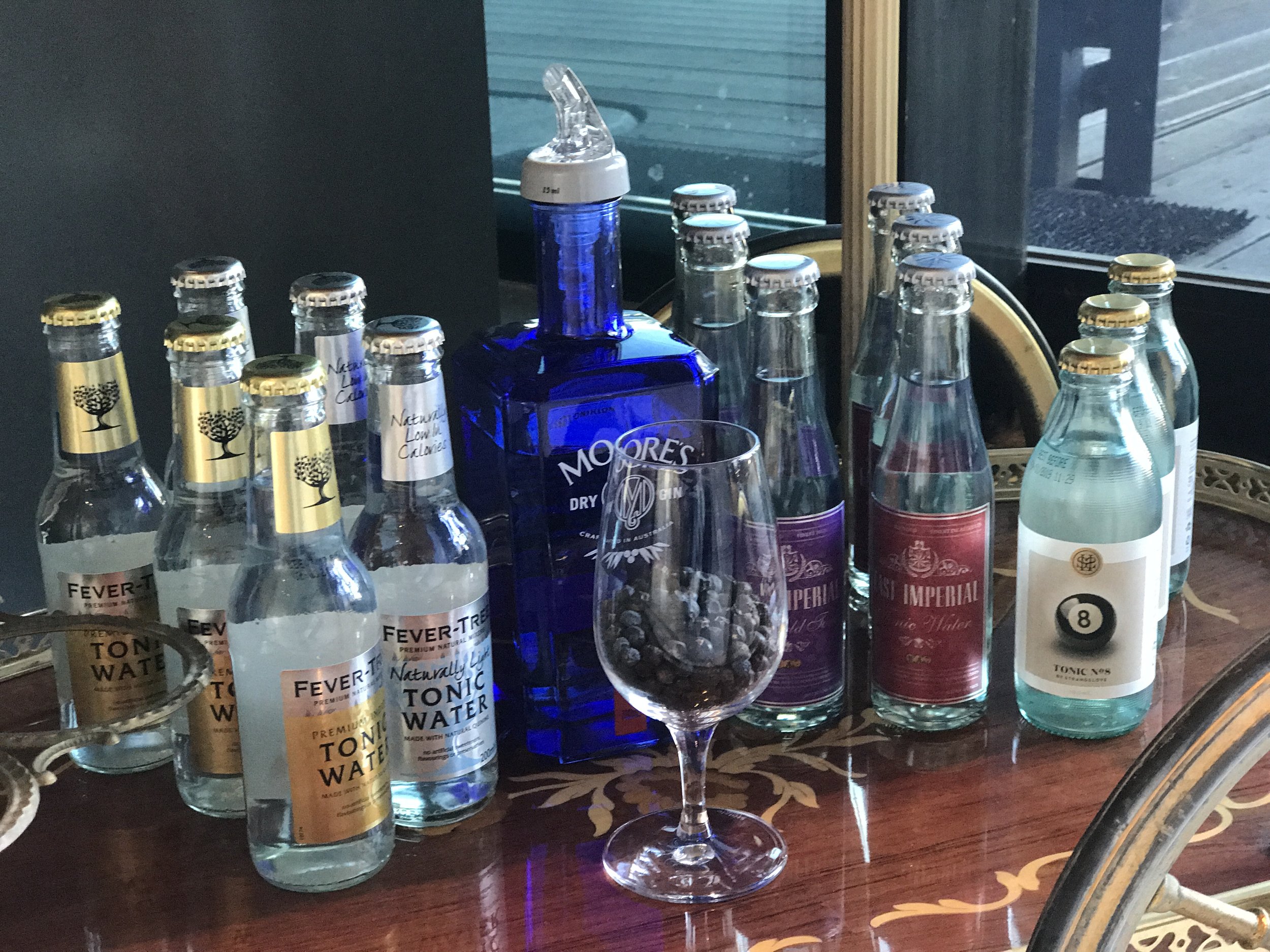Guide to Gin & Tonic
A short guide to how the gin and tonic came to be
What is tonic water? Many summer lover’s chosen mixer, tonic water is a hint more than soda water, but not quite soft drink. In a nutshell, it’s a tasty and popular carbonated water in which small doses of quinine and sometimes sweetening agents are dissolved. It’s a party in your mouth and our good friend quinine is what gives it that iconic bitter zing, tonic water has become so well known for.
A little bit of history
Apart from coming from your fridge, much like some of our favourite libations, tonic water is anchored in history. But, of course we can’t really tell the story of tonic water without including gin - the two are undeniably intertwined. As you know quinine is the prominent ingredient in tonic water, which was originally used as a malaria treatment during the days of colonial India. In 1638 in a time when malaria was rampant, the story goes that the wife of the Spanish Viceroy in Peru contracted the disease. The Spanish Viceroy then begged the local Incas for an antidote to which they provided a drink containing the ground bark of the native “Quinquina" or chinchona tree, found to grow on the slopes of the Andes. She was cured and the Spanish then claimed the recipe as their own. Legends and fables aside, the first documented use of quinine is recorded in 1630 in Peru. It’s believed that, as cinchona bark is extremely bitter, in 1825 the British officers in the Indian army found that the addition of sugar, citrus, gin and soda water was the perfect way to balance the bitterness and make the cure palatable. While the ‘tonic’ was still used as a means to cure malaria up until the 1920s, the British troops at the time found a way to transition from drinking the medicine at dawn into enjoying the cure at cocktail hour, thus birthing the G&T. Of course, as gin transformed into a ‘gentleman’s’ drink, the G&T naturally adopted the same sentiment.
Tonic water today
Of course today, quinine as a means to cure malaria has been outdated by better more efficient prescriptions, but tonic water very much still remains a big part of our drinking culture - be it far less bitter now than in the 17th century. Though its commercial popularity can really only be attributed to the success of the gin & tonic. The classic cocktail is one of the most popular go-to drinks there is. Why? Because of its unique flavour profile, the combinations of a variety of herbal notes and botanicals paired with the bitterness of quinine, and of course, its perpetual ability to refresh. The trending fame of the G&T over the last few years has seen a surge in not only boutique gins across the globe but also bespoke tonic water offerings created specifically for pairing with gin - Fever Tree, Strangelove, East Imperial and Capi to name a few.
Classified as one of the world’s most popular drinks, tonic water’s appeal is not only limited to the classic G&T - though we wouldn’t blame you if you started and stopped there. Tonic water is a much loved mixer of bartenders and today, you won’t be hard pressed to find our bitter sweet, bubbly friend, on plenty of solid cocktail lists around town.


